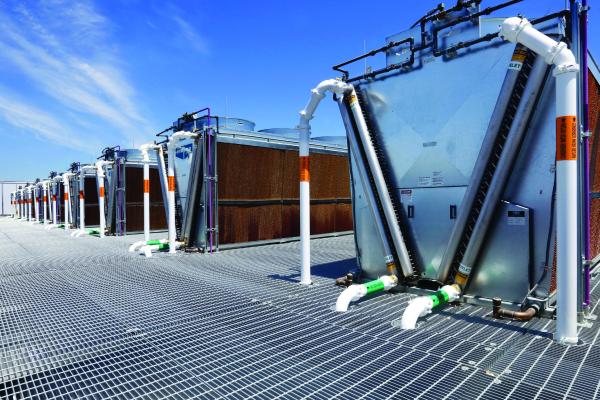Technology
This article will explore the Cooling Technologies Institute (CTI) Standard 201 (STD-201) Thermal Certification This article will explore the Cooling Technology Institute (CTI) Standard 201 (STD-201) Thermal Certification Program, share perspective from leading cooling tower manufacturers, and cover other existing and evolving CTI test codes, standards and certifications. This article will also emphasize the investment and bandwidth contributed to CTI by cooling tower manufacturers for the benefit of the industry and its end users.
Free cooling is a type of process cooling system design that takes advantage of ambient temperatures to reduce or even eliminate chiller operation. Chillers consume large amounts of energy; so, reducing a chiller’s operating hours per year can result in significant bottom line savings for your company. In this article, we will review a typical free cooling system design, some of the considerations for your system, and finally, how these considerations impact your system’s ability to capitalize on the free cooling operation.
[ Read Full Story ]
Hospitals account for nearly 5% of the total energy use in the United States each year. The average 200,000 ft2 facility spends about $13,600 per bed, or roughly $680,000 annually, on energy costs. Why so much? Operating twenty-four hours a day, thousands of employees, patients, and visitors cycle through campus buildings daily. Additionally, hospitals maintain high ventilation rates to lessen the risk of microbial contamination; the conditioning requirements of this outdoor air represents significant energy usage. Lastly, the use of sophisticated imaging equipment, electronic health record systems and other operations generates heat that must be compensated for via the site’s cooling load.
[ Read Full Story ]
The inefficiency of fossil fuels, along with the negative environmental impact coming from their burning and resulting emissions, is driving companies to find alternative heating and cooling solutions. While renewable sources – such as wind and solar power – are decreasing this impact, other fossil fuel-burning sources need to be replaced with electric-driven alternatives to fully realize their emissions reduction potential. New vapor compression technology can help reduce heating and cooling operations while providing these additional CO2 emissions reductions.
[ Read Full Story ]
With efficient heat exchange an important requirement in the design of an HVAC system, the type of cooling tower you specify to support your project’s unique cooling goals requires careful consideration. After determining the process parameters required for your application – tonnage, range, and approach – cooling tower capabilities can be analyzed.
[ Read Full Story ]
This article discusses using devices known as “waterside economizers” and “dry coolers” as means to achieve “free-cooling”. Free cooling (sometimes referred to as a “free cooling system”) can reduce energy consumption and operating costs by using cold ambient air in lieu of running chiller compressors for cooling loads.
[ Read Full Story ]
For the Production Support team at the expansive Quad printing plant in Sussex, Wis., there isn’t one way to manage the operation’s complex and elaborate process cooling system. Rather, the formula for success involves a three-pronged approach that includes carefully measuring and monitoring system performance, diligently and proactively maintaining equipment to ensure peak efficiencies, and investing in updated equipment based on sound decision making.
[ Read Full Story ]
rPlanet Earth is a rarity in the plastics recycling and manufacturing industry. After all, its operation in Vernon, California, is the world’s only vertically integrated facility able to convert polyethylene terephthalate (PET) packaging waste into recycled PET (rPET) packaging for food and beverage industries. Yet, rPlanet Earth is much like any other plastics company in one key aspect: it must maintain production efficiencies to meet growing demand for its high-quality products.
[ Read Full Story ]
Reducing fossil fuel use is key to meeting the dual goal of carbon and energy cost reduction. A Full Heat Recovery Engagement (FHRE) approach can dramatically reduce both, through applying simple principles and using existing technology. Simple measures can help focus the design of both the buildings served and the systems used to achieve these goals.
[ Read Full Story ]
Chiller & Cooling Best Practices Magazine spoke with Tom Pagliuco, Executive Director Global Energy Engineering at AbbVie, Inc. about best practices for optimizing chilled water systems in today’s pharmaceutical operations.
[ Read Full Story ]
Atlas Copco made headlines recently after introducing itself to the U.S. industrial process cooling chiller market with the launch of the TCX 4-90A chiller range. Chiller & Cooling Best Practices Magazine interviewed Robert Tucker to learn about Atlas Copco’s strategy in the United States. Tucker, a business development manager with more than 30 years of industrial fluid dynamics experience, leads the U.S. process cooling chiller initiative within the Atlas Copco Compressor Oil-free Air Division.
[ Read Full Story ]

